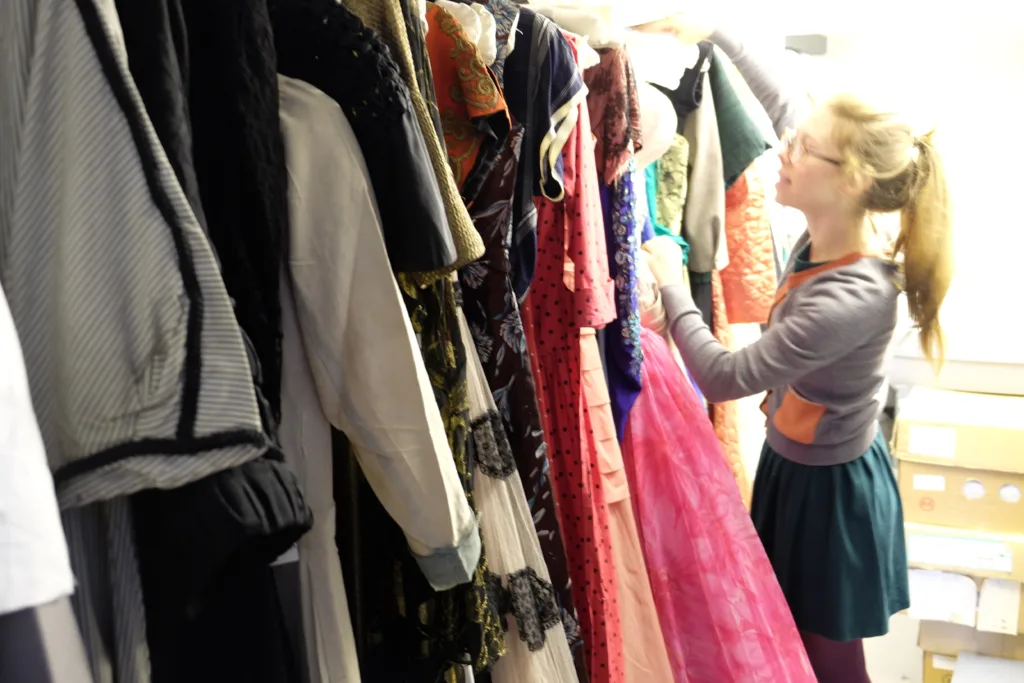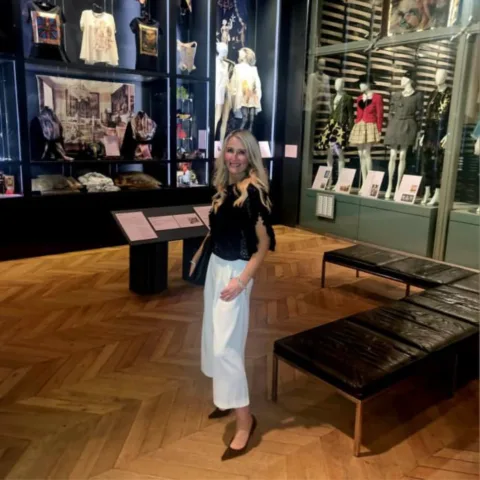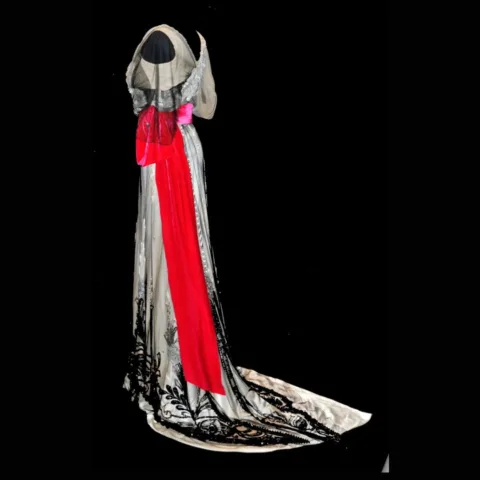The Bowes Museum Blog

There’s no ‘I’ in re-store!

It is a common misconception that as a textile conservator you are an automatic candidate for the Great British Sewing Bee. This is not the case. While I would say I am competent with a sewing machine, I am neither the fastest of machine sewers, nor the most creative. Therefore, when confronted with the prospect of auditing and re-storing an entire costume collection of two hundred and fifty plus garments in Tyvek® garment bags I decided to cut my losses and call in the professionals. Luckily for me The Bowes Museum has had two extremely experienced seamstress volunteers in the textile conservation department since my arrival, Beverly Peach and Izabela Kawka, without whom this mammoth task would not have been possible. I would like to take this opportunity to thank them both for sharing their sewing tips with me and pass some of their wisdom on via this blog.
Stage 1: Photographing
As very few of the garments had a digital image the first task was to get a quick front and back shot of each piece. A photography station was set up outside the store where Jason Haynes, The Museum photographer, has been snapping away at a rate of knots while I have been keeping a careful list of items in their chronological order.
Stage 2: Hanging
The garments had mostly been hung on shaped forms, custom-made from a rather un-conservation-friendly combination of chipboard and polyurethane foam. The Bowes Museum recently inherited a huge collection of hand-made padded hangers from the Fashion Museum in Bath and therefore I have been able to replace all of those foam/wood horrors with something far more inert at little extra cost.

CST.1.322 on wood and foam hanger (before re-storage!)

Terrifying!!
I have also been stitching wide cotton tabs into all of the skirts to distribute their weight more evenly during hanging – a time efficient compromise rather than a perfect solution but certainly an improvement on the narrow cotton tabs previously in use.

CST.1.811 Skirt hanging from narrow tapes (before), and wider tapes (after)
Some of the skirts are just too heavy or delicate to hang from defined points and in these circumstances I have been padding a rectangle of Corex® with polyester wadding and cotton jersey to wedge inside and support the skirt. Until Izabella came along I had been painstakingly sewing each of these by hand, but she has come up with a far niftier solution:


CST.3.26 Bernat Klein skirt – on quick fix hanger
Stage 3: Tyvek® Bagging
I worked out that the majority of the garments could go in a 70cm x 150cm garment bag, allowing us to get 66 bags out of a 100m roll of Tyvek® and costing them in at £2.23 a bag – quite the bargain! A roll could be cut in one sitting and, as each bag required a perfect square, the cutting process could be sped up by folding the roll across the diagonal.

Beverly suggested making the bags like a pillowcase to create a more effective seal and hey presto – 1 roll of Tyvek® = 66 easy-to-make bags ready for the store.

The project is well and truly underway, a volunteer comes in every Friday morning to make bags, hangers or curtains and this is also the time that I continue with the audit, assist with photography and re-hang garments. Nothing happens overnight but it is my hope that a beautifully re-stored Room W.R.1 will be my legacy to The Bowes Museum when I finish my internship in October. Thanks to Izabella, Beverly, Katy, Jason and Bridget for all of their hard work – the end is in sight.

Work in Progress!
Jamie Robinson, HLF/ICON Textiles Conservation Intern
![]()







